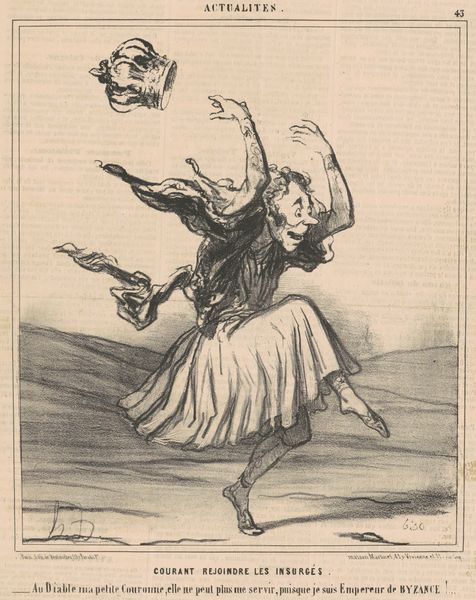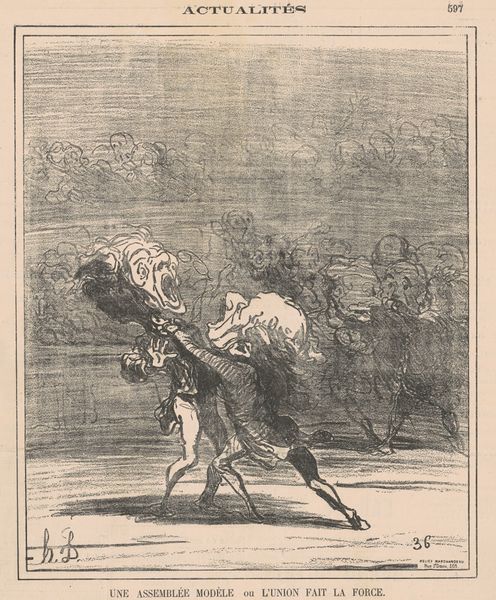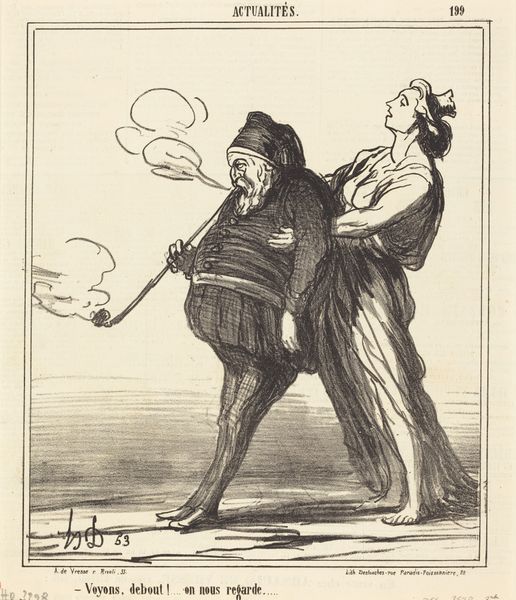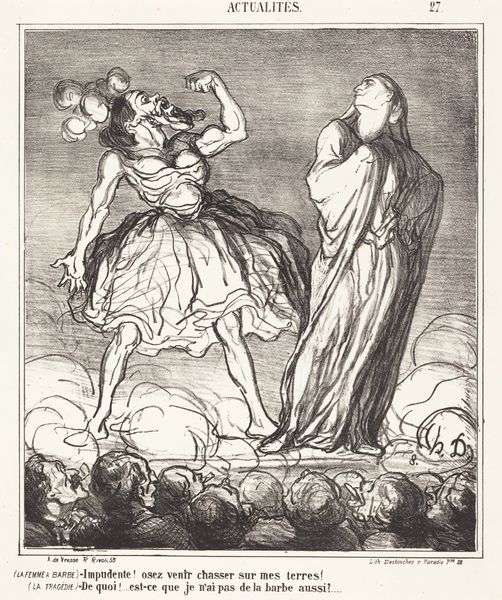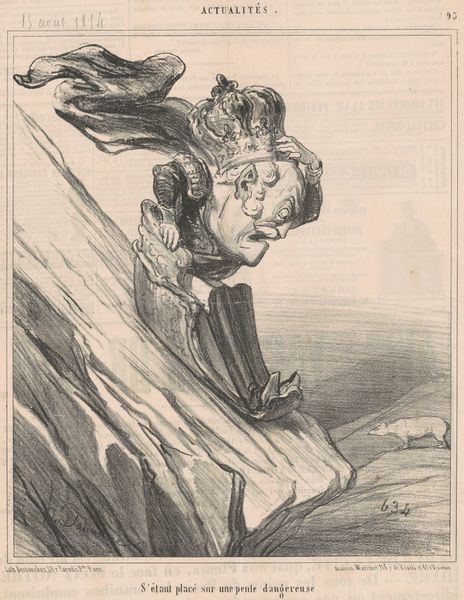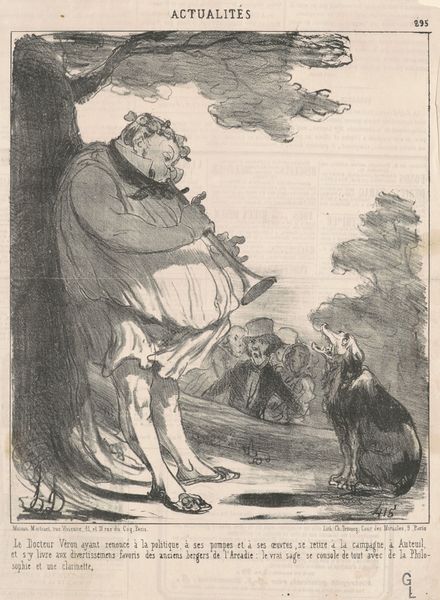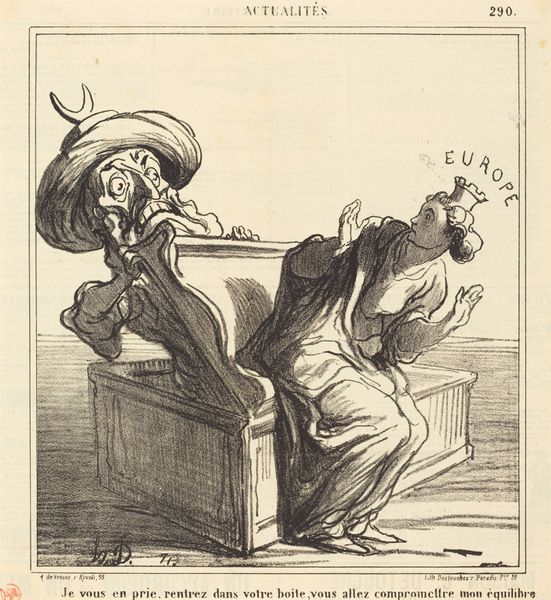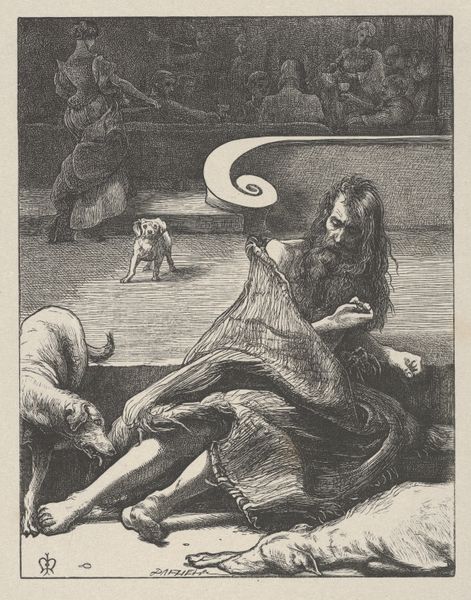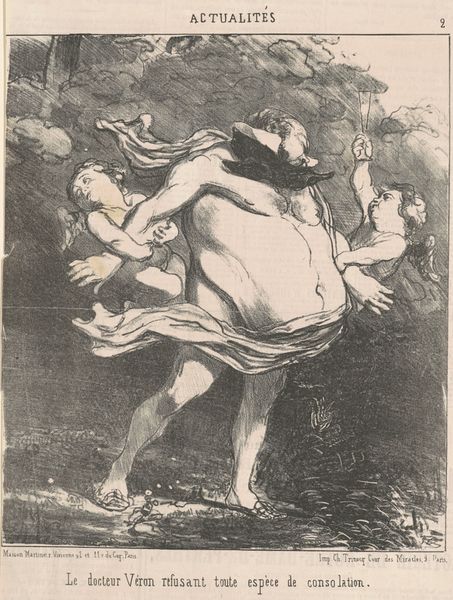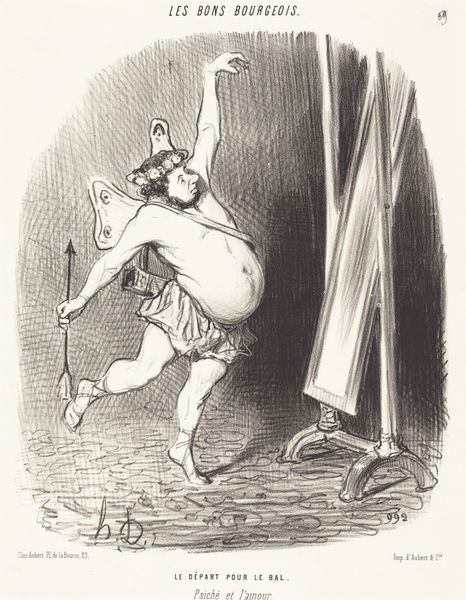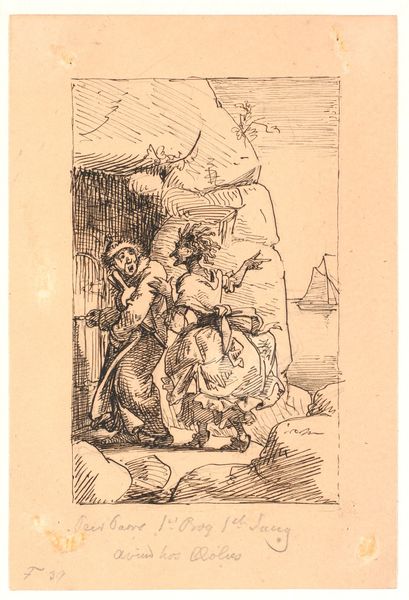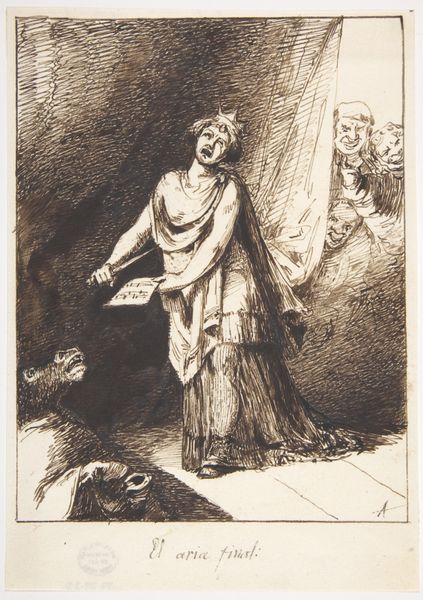
lithograph, print
#
lithograph
# print
#
caricature
Copyright: National Gallery of Art: CC0 1.0
Curator: What an evocative image! We're looking at Honoré Daumier's lithograph "La Nouvelle Cendrillon," or "The New Cinderella," created in 1866. It's a piece teeming with political commentary disguised as fairytale. Editor: It strikes me as intensely satirical, even cruel. The exaggerated features, the stark black and white contrast… There's a real sense of impending doom lurking beneath the surface. Curator: Absolutely. Daumier masterfully uses caricature here. The figure fleeing is clearly labeled "Autriche," or Austria, and the looming, imploring figure behind her, marked with papal imagery, presumably represents the Papal States. Note how Italy peels away from Austria's skirt. Editor: That is cleverly done. Austria's dress becomes a political map! Beyond the literal, consider Cinderella. The slipper here isn't a symbol of romantic destiny but one of lost territory, of fractured power. What fairy tale turns so sour? Curator: Precisely! Daumier twists the iconography. Traditionally, Cinderella is about transformation and hope. Here, it’s about decline and desperation. Observe how Daumier uses line work to create a sense of chaotic movement. The receding lines of the stage exacerbate the feeling of Austrai’s stumble. Editor: I see a sense of hurried departure, enhanced through Daumier’s expert draftsmanship. I am also interested by Austria looking back. There is some reluctance in the form to completely release herself to destiny. A last bit of ego being played out to an uncaring world. Curator: Yes, a great psychological understanding there, definitely adding to the caricature’s effect. Consider, too, the role of the lithographic process itself. The medium lends itself to these stark contrasts, further emphasizing the drama. Editor: The sharp lines almost feel like cuts, like the severing of ties between Austria and its territories. This definitely underscores the volatile geopolitical climate of the time. Curator: Exactly, so while seemingly fantastical, it's deeply rooted in the political realities of the mid-19th century. Through symbolism and masterful technique, Daumier offers a stinging critique of power dynamics in Europe. Editor: Yes. He makes you see not the pretty dress of a fairy tale but the exposed and ragged undergarments of imperial politics. Bleak, but undeniably powerful.
Comments
No comments
Be the first to comment and join the conversation on the ultimate creative platform.
